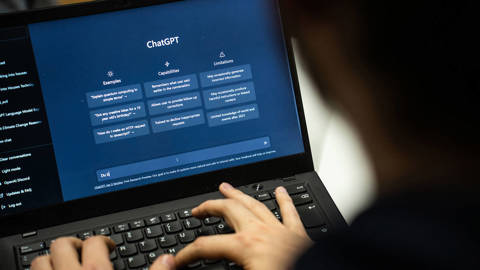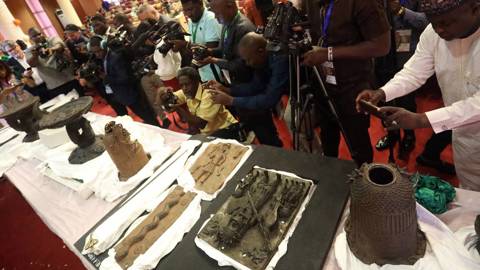Scientific advances are helping America and the world to tackle major global challenges, including the ongoing COVID-19 pandemic and climate change. By empowering members of underrepresented groups to capitalize on their talents, advances toward racial and gender parity in science would accelerate the pace of progress, benefiting everyone.
URBANA, ILLINOIS – Kamala Harris made history earlier this month by becoming the first woman, and the first black person and South Asian American, to serve as vice president of the United States. But despite these occasional big wins, America is far from achieving racial and gender parity in many fields, from government to science, the field in which I work.
According to UNESCO, just 30% of science researchers globally are women, and black women account for only a small proportion of that number. Similarly, one US study last year revealed that science textbooks feature only a small number of scientists of color, including black women, thus providing few role models for the diverse range of students who use them.
This disparity reinforces the status quo. In 2016, students of color received just 22% of US bachelor’s degrees in science and engineering and 9% of doctorates in those fields. After graduating, their numbers dwindle further: black people account for less than 10% of America’s scientific workforce.
When people of color do choose to study and work in science, technology, engineering, and mathematics (STEM) fields, they may face both implicit and explicit discrimination and biases. According to a 2018 Pew Research Center report, 62% of black STEM workers said they had experienced discrimination. Other studies show that racial bias can also devalue black STEM students’ racial identities.
Socioeconomic inequalities in education, coupled with inadequate policies, hamper efforts to achieve gender and racial balance in the STEM disciplines. Moreover, the Trump administration’s restrictive immigration policies during the last four years have discouraged and limited inflows of STEM talent to the US.
This must change. At a time when it is more crucial than ever that science attracts the best minds, the underrepresentation of women and people of color in STEM fields has significant consequences for America and the world. We must do better at giving aspiring black girls and women role models who look like them, so that future trailblazers can, like Harris, thrive and shatter more glass ceilings.
So, how can America’s racial disparities in science be addressed? First, we need sustainable policies that target affordability, starting at the college level. To boost enrollment and encourage women and students of color who are already pursuing STEM majors to finish their degrees requires ensuring that they are able to bear the financial burden. The evidence suggests the importance of making financial aid and Pell Grants available to students of color and other minorities from low- and moderate-income families. Indeed, given that many students currently must juggle school and work commitments, financial aid and other assistance available to students of color in STEM fields should be doubled.
But financial aid alone is not sufficient. Mentoring at all levels – for secondary school and college students, and for early and mid-career professionals – can be critical to helping improve academic retention rates and ensuring that people of color thrive in STEM jobs. The good news is that some institutions are establishing and funding such programs. In 2019, for example, the University of California, Davis, received over $1 million to set up a mentoring scheme for 15,000 girls with the aim of closing the STEM gender gap.
Research shows how mentoring can help women to remain in the sciences by boosting their sense of belonging and confidence. To lock in positive change requires individuals, universities, US federal agencies, and private STEM-focused firms take a proactive approach to the task.
Third, the US needs a federal government that is committed to science and empowering women, especially those of color. Fortunately, President Joe Biden’s administration has a bold agenda for women. Specifically, it proposes to make historically black colleges and universities and other minority-serving institutions tuition-free for students whose family incomes are below $125,000 per year. Biden also plans to enforce Title IX protections to ensure that women and girls receive financial aid and other educational opportunities to realize their full potential.
Importantly, individual US states also must commit to tackling female and minority underrepresentation in STEM fields, and identify and scale up promising initiatives geared toward that goal.
Lastly, we need more research to generate data-based evidence about the best ways to reduce racial disparities in science. Compared to research on gender biases in academia, racial biases remain understudied. Funding agencies such as the National Science Foundation should therefore earmark funds exclusively for such research.
Scientific advances are helping America and the world to tackle major global challenges, including the ongoing COVID-19 pandemic and climate change. By empowering members of underrepresented groups to capitalize on their talents, advances toward racial and gender parity in science would accelerate the pace of progress, benefiting everyone.











URBANA, ILLINOIS – Kamala Harris made history earlier this month by becoming the first woman, and the first black person and South Asian American, to serve as vice president of the United States. But despite these occasional big wins, America is far from achieving racial and gender parity in many fields, from government to science, the field in which I work.
According to UNESCO, just 30% of science researchers globally are women, and black women account for only a small proportion of that number. Similarly, one US study last year revealed that science textbooks feature only a small number of scientists of color, including black women, thus providing few role models for the diverse range of students who use them.
This disparity reinforces the status quo. In 2016, students of color received just 22% of US bachelor’s degrees in science and engineering and 9% of doctorates in those fields. After graduating, their numbers dwindle further: black people account for less than 10% of America’s scientific workforce.
When people of color do choose to study and work in science, technology, engineering, and mathematics (STEM) fields, they may face both implicit and explicit discrimination and biases. According to a 2018 Pew Research Center report, 62% of black STEM workers said they had experienced discrimination. Other studies show that racial bias can also devalue black STEM students’ racial identities.
Socioeconomic inequalities in education, coupled with inadequate policies, hamper efforts to achieve gender and racial balance in the STEM disciplines. Moreover, the Trump administration’s restrictive immigration policies during the last four years have discouraged and limited inflows of STEM talent to the US.
This must change. At a time when it is more crucial than ever that science attracts the best minds, the underrepresentation of women and people of color in STEM fields has significant consequences for America and the world. We must do better at giving aspiring black girls and women role models who look like them, so that future trailblazers can, like Harris, thrive and shatter more glass ceilings.
SPRING SALE: Save 40% on all new Digital or Digital Plus subscriptions
Subscribe now to gain greater access to Project Syndicate – including every commentary and our entire On Point suite of subscriber-exclusive content – starting at just $49.99.
Subscribe Now
So, how can America’s racial disparities in science be addressed? First, we need sustainable policies that target affordability, starting at the college level. To boost enrollment and encourage women and students of color who are already pursuing STEM majors to finish their degrees requires ensuring that they are able to bear the financial burden. The evidence suggests the importance of making financial aid and Pell Grants available to students of color and other minorities from low- and moderate-income families. Indeed, given that many students currently must juggle school and work commitments, financial aid and other assistance available to students of color in STEM fields should be doubled.
But financial aid alone is not sufficient. Mentoring at all levels – for secondary school and college students, and for early and mid-career professionals – can be critical to helping improve academic retention rates and ensuring that people of color thrive in STEM jobs. The good news is that some institutions are establishing and funding such programs. In 2019, for example, the University of California, Davis, received over $1 million to set up a mentoring scheme for 15,000 girls with the aim of closing the STEM gender gap.
Research shows how mentoring can help women to remain in the sciences by boosting their sense of belonging and confidence. To lock in positive change requires individuals, universities, US federal agencies, and private STEM-focused firms take a proactive approach to the task.
Third, the US needs a federal government that is committed to science and empowering women, especially those of color. Fortunately, President Joe Biden’s administration has a bold agenda for women. Specifically, it proposes to make historically black colleges and universities and other minority-serving institutions tuition-free for students whose family incomes are below $125,000 per year. Biden also plans to enforce Title IX protections to ensure that women and girls receive financial aid and other educational opportunities to realize their full potential.
Importantly, individual US states also must commit to tackling female and minority underrepresentation in STEM fields, and identify and scale up promising initiatives geared toward that goal.
Lastly, we need more research to generate data-based evidence about the best ways to reduce racial disparities in science. Compared to research on gender biases in academia, racial biases remain understudied. Funding agencies such as the National Science Foundation should therefore earmark funds exclusively for such research.
Scientific advances are helping America and the world to tackle major global challenges, including the ongoing COVID-19 pandemic and climate change. By empowering members of underrepresented groups to capitalize on their talents, advances toward racial and gender parity in science would accelerate the pace of progress, benefiting everyone.